Genomic Designing for Biotic Stress Resistant Technical Crops

The Springer logo.
Editor
Chittaranjan Kole
Raja Ramanna Fellow, Department of Atomic Energy, Government of India, ICAR-National Institute for Plant Biotechnology, New Delhi, India
ISBN 978-3-031-09292-3 e-ISBN 978-3-031-09293-0
https://doi.org/10.1007/978-3-031-09293-0
The Editor(s) (if applicable) and The Author(s), under exclusive license to Springer Nature Switzerland AG 2022
This work is subject to copyright. All rights are solely and exclusively licensed by the Publisher, whether the whole or part of the material is concerned, specifically the rights of translation, reprinting, reuse of illustrations, recitation, broadcasting, reproduction on microfilms or in any other physical way, and transmission or information storage and retrieval, electronic adaptation, computer software, or by similar or dissimilar methodology now known or hereafter developed.
The use of general descriptive names, registered names, trademarks, service marks, etc. in this publication does not imply, even in the absence of a specific statement, that such names are exempt from the relevant protective laws and regulations and therefore free for general use.
The publisher, the authors, and the editors are safe to assume that the advice and information in this book are believed to be true and accurate at the date of publication. Neither the publisher nor the authors or the editors give a warranty, expressed or implied, with respect to the material contained herein or for any errors or omissions that may have been made. The publisher remains neutral with regard to jurisdictional claims in published maps and institutional affiliations.
This Springer imprint is published by the registered company Springer Nature Switzerland AG
The registered company address is: Gewerbestrasse 11, 6330 Cham, Switzerland
Dedicated to

A photo of Professor Roger D. Kornberg.
Prof. Roger D. Kornberg
Nobel Laureate in Chemistry 2006
Professor of structural biology at Stanford
University School of Medicine
With regards and gratitude for his generous
appreciations of my scientific contributions
and service to the academic community and
constant support and encouragement during
my professional journey!
Preface
Crop production is drastically affected due to external or environmental stresses. The biotic stresses cause significant yield losses in the range of 3142% together with 620% loss during the post-harvest stage. The abiotic stresses also aggravate the situation with crop damage in the range of 620%. Understanding the mechanisms of interaction of plants with the biotic stresses caused by insects, bacteria, fungi, viruses and oomycetes, etc., and abiotic stresses due to heat, cold, drought, flooding, submergence, salinity, acidity, etc., is critical to develop resilient crop varieties. Global warming and climate change are also causing emergence of new diseases and insects together with newer biotypes and physiological races of the causal agents in one hand and aggravating the abiotic stress problems with additional extremes and unpredictability. Development of crop varieties resistant and/or adaptive to these stresses is highly important. The future mission of crop improvement should, therefore, lay emphasis on the development of crop varieties with optimum genome plasticity by possessing resistance or tolerance to multiple biotic and abiotic stresses simultaneously. A moderate estimation of world population by 2050 is about 9.3 billion that would necessitate an increase of crop production by about 70%. On the other hand, the additional losses due to climate change and global warming somewhere in the range of 1015% should be minimized. Therefore, increase in the crop yield as well as minimization of its loss should be practiced simultaneously focusing both on adaptation andon mitigation.
Traditional plant breeding practiced in the last century contributed a lot to the science of crop genetic improvement. Classical plant breeding methods including selection, hybridization, polyploidy and mutation effectively catered to the basic F5 needfood, feed, fiber, fuel and furniture. The advent of molecular breeding and genetic engineering in the latter part of that century complimented classical breeding that addressed the increasing needs of the world. The twenty-first century came with a gift to the geneticists and plant breeders with the strategy of genome sequencing in Arabidopsis and rice followed by the tools of genomics-aided breeding. More recently another revolutionary technique, genome or gene editing, became available for genetic correction of crop genomes! The travel from plant breeding based on visual or perceivable selection to molecular breeding assisted by linked markers to transgenic breeding using genetic transformation with alien genes to genomics-aided breeding facilitated by known gene sequences has now arrived at the age of genetic rectification employing genome or gene editing.
Knowledge on the advanced genetic and genomic crop improvement strategies including molecular breeding, transgenics, genomic-assisted breeding and the recently emerged genome editing for developing resistant, tolerant and/or adaptive crop varieties is useful to students, faculties and scientists in the public and private universities and organizations. Whole genome sequencing of most of the major crop plants followed by genotyping-by-sequencing has facilitated identification of exactly the genes conferring resistance, tolerance or adaptability leading to gene discovery, allele mining and shuttle breeding which in turn opened up the scope for designing or tailoring crop genomes with resistance/tolerance to biotic and abiotic stresses.
To my mind, the mission of agriculture in this century is FHNEE security meaning food, health, nutrition, energy and environment security. Hence, genome designing of crops should focus on breeding of varieties with higher yields and improved qualities of the five basic F5 utilities; nutritional and neutraceutical compounds; and other industrially and aesthetically important products and possibility of multiple utilities. For this purpose of precise breeding, employment of the genetic and genomic techniques individually or in combination as and when required will play a crucial role.
The chapters of the 12 volumes of this twin book series entitled, Genomic Designing for Biotic Stress Resistant Crops and Genomic Designing for Abiotic Stress Resistant Crops will deliberate on different types of biotic and abiotic stresses and their effects on and interaction with crop plants; will enumerate the available genetic diversity with regard to biotic or abiotic stress resistance among cultivars; illuminate on the potential gene pools for utilization in interspecific gene transfer; will brief on the classical genetics of stress resistance and traditional breeding for transferring them to their cultivated counterparts; will discuss on molecular mapping of genes and QTLs underlying stress resistance and their marker-assisted introgression into elite crop varieties; will enunciate different emerging genomics-aided techniques including genomic selection, allele mining, gene discovery and gene pyramiding for developing smart crop varieties with genetic potential to produce F5 of higher quantity and quality; and also will elaborate the case studies on genome editing focusing on specific genes. Most of these chapters will discuss on the success stories of genetic engineering in the relevant crops specifically for generating crops with resistance and/or adaptability to diseases, insects and abiotic stresses.

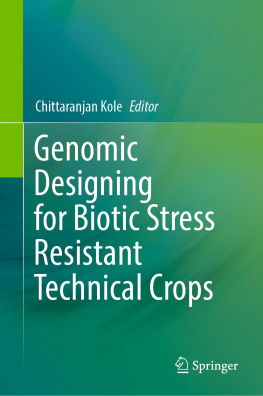
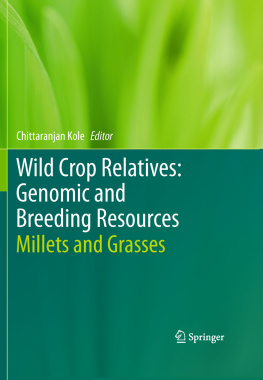
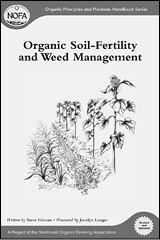
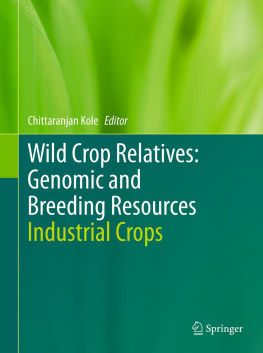


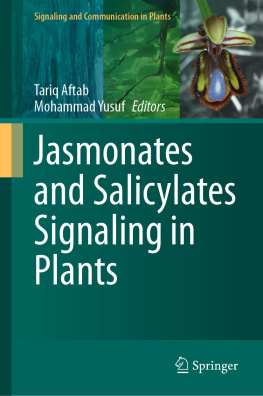
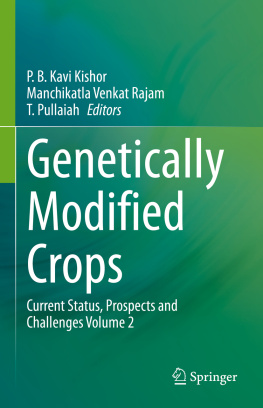

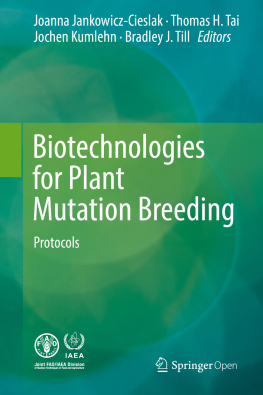



 A photo of Professor Roger D. Kornberg.
A photo of Professor Roger D. Kornberg.